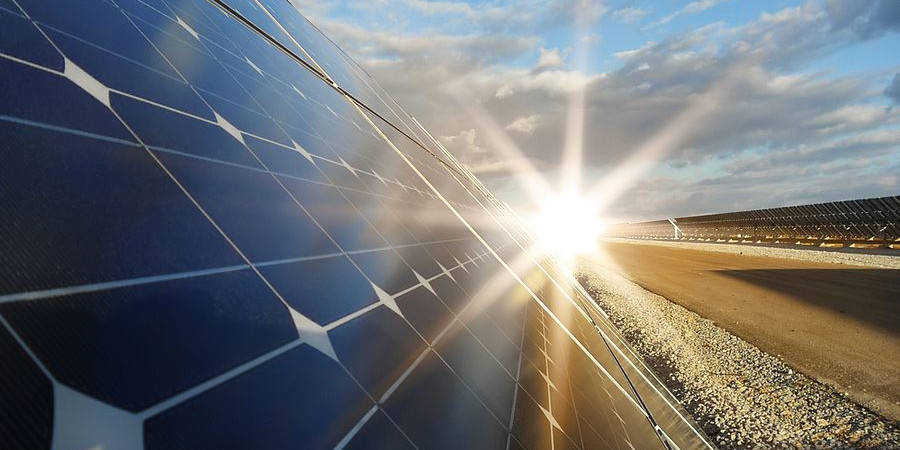The Fifth Meeting of the ISA Regional Committee for Latin America and the Caribbean Region took place this week, convened by the International Solar Alliance (ISA). Its primary objective was translating ambitious solar energy goals into concrete results while addressing pertinent regional issues.
The meeting was presided over by Tania Masea, vice minister for new sources of the Ministry of People’s Power for Energy of the Bolivarian Republic of Venezuela, representing Latin America and the Caribbean Region as the ISA regional vice president.
The meeting was held virtually with participation from 20 ISA member countries, six ISA signatories, and seven prospective member countries from Latin America and the Caribbean Region, as well as representatives from ISA partner organizations and special invitees.
During the meeting, representatives from member countries addressed a range of topics related to the International Solar Alliance’s support programs for advancing solar energy deployment. Additionally, discussions revolved around the progress and impact of ISA flagship initiatives, including STAR-C, SolarX Startup Challenge, and Solar Finance Facility.
Tania Masea, vice minister for new sources of the Ministry of People’s Power for Energy of the Bolivarian Republic of Venezuela, said, “The region is gearing to implement approximately 250 projects in the forthcoming years, with a planned capacity of nearly 19 GW…Brazil, Mexico, Columbia, Chile, and Peru are spearheading solar energy adoption. These five nations contribute to over 88% of the installed solar capacity and approximately 97% of the planned expansions already underway. Around 15 countries within LAC have steadfastly committed to fulfilling 70% of the energy demands through renewable energy by 2030.”
Noting that a 50% discount is available for solar pumps in Africa, Masea proposed extending this discount to Latin America as well. “By aggregating our volume, we can potentially negotiate a more favorable price for solar pumps. I suggest we initiate the tendering process without delay,” she said.
The Meeting discussed the ISA Five-Year Strategic Plan (2021-26), which outlines the roadmap for achieving the goals established by the ISA Framework Agreement. This strategic blueprint addresses the diverse needs of member countries within the ISA. It comprises a range of undertakings, including providing programmatic support and assistance to least developed countries and small island developing states in conducting capacity-building programs, offering analytics and advocacy support, facilitating investment mobilisations and assisting technological advancements.
ISA aims to secure $1 billion over five years to achieve these objectives.
Ajay Mathur, director general of ISA, said, “The future of energy transition in the Latin America and the Caribbean Region holds immense challenges and promising opportunities. This transition is driven by economic, environmental, and social factors and has the potential to shape the energy landscape of the entire region. One of the critical challenges facing energy transition in this region is the need for significant investments in infrastructure and technology. As renewable energy sources are intermittent, efficient storage solutions are also necessary to ensure a stable and reliable energy supply.”
“We can effectively mitigate the impacts by collaborating on climate action, sharing best practices, and implementing joint strategies. Highlighting the importance of collaboration and knowledge sharing,” he added.
Deodat Indar, minister within the Ministry of Public Works of Guyana, remarked, “The government of Guyana has benefitted from ISA and looks forward to opportunities for greater collaboration as our country embarks on tremendous transformation in the energy sector.”
The Meeting spotlighted mini-grids’ role in universalizing energy access through innovative business models. As the international organization partner of India’s G20 Presidency, ISA released a report on the Roadmap of Solar Energy for Universal Energy Access. The Roadmap is a collaborative endeavor between ISA and India’s Ministry of New and Renewable Energy (MNRE), unfolding a strategic vision of leveraging solar-driven solutions to tackle the global energy access challenge effectively and economically. The report provides case studies, examples, and innovative policies that can make a pivotal shift in the deployment of solar mini-grids.
The International Solar Alliance is an international organization with 116 Member and Signatory countries. It works with governments to ease solar deployment and promote solar power as a sustainable transition to a carbon-neutral future. ISA’s mission is to unlock $1 trillion of investments in solar by 2030 while reducing technology and its financing costs. It promotes the use of solar energy in the agriculture, health, transport, and power generation sectors.
This content is protected by copyright and may not be reused. If you want to cooperate with us and would like to reuse some of our content, please contact: editors@pv-magazine.com.









By submitting this form you agree to pv magazine using your data for the purposes of publishing your comment.
Your personal data will only be disclosed or otherwise transmitted to third parties for the purposes of spam filtering or if this is necessary for technical maintenance of the website. Any other transfer to third parties will not take place unless this is justified on the basis of applicable data protection regulations or if pv magazine is legally obliged to do so.
You may revoke this consent at any time with effect for the future, in which case your personal data will be deleted immediately. Otherwise, your data will be deleted if pv magazine has processed your request or the purpose of data storage is fulfilled.
Further information on data privacy can be found in our Data Protection Policy.